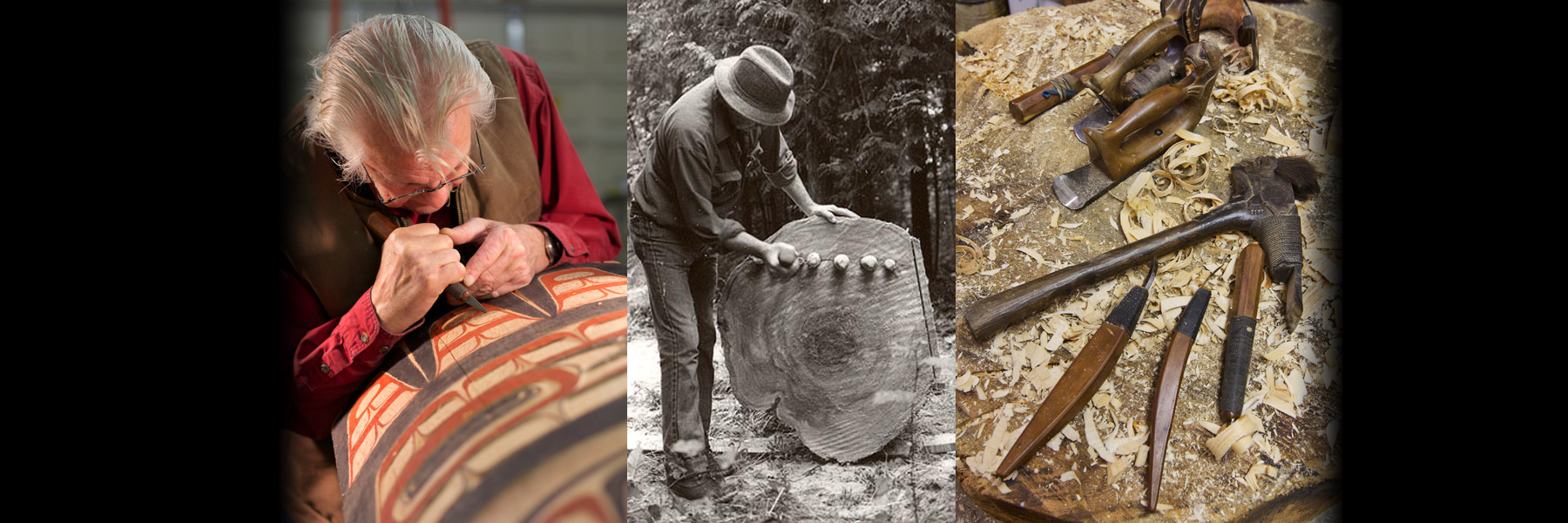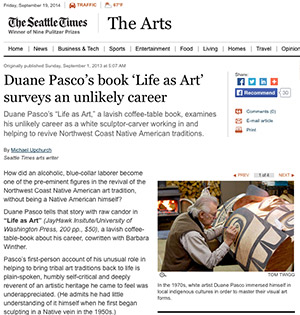ABOUT THE ARTIST
I spent my childhood in Alaska and my school years in Seattle, until being drafted in 1952. After two years serving with the army in Korea, I returned to Washington, and worked variously as a warehouseman, Boeing machinist, cabinet maker, house framer, and then structural iron worker.
By 1967, I had been carving curios part-time for a few years. I took a leave of absence from work and managed to eke out a living by producing and selling what I thought was “traditional” Northwest Coast Native Art.
I was getting some pretty good commissions during the early 1970s thanks to a “renaissance” of sorts in this art form, but in 1976 I seriously considered moving on. A long-time interest in traditional Norwegian small boats took me to Norway, where I took lines of a few lap-strake boats, as well as many photographs. I was ready to embark on a new career. However, during the trip my wife and I visited the Sacred Circles exhibit at the Tate in London. This fantastic array of pre-twentieth century Native American art included a large number of which were chosen Northwest coast pieces. Captivated and inspired, I couldn’t wait to return home and launch myself onto a program of re-education.I literally put everything that I thought I knew into the trash and emptied it. I began visiting museums and their store rooms. Bill Holm, author of the extremely helpful Northwest Coast Indian Art, an Analysis of Form, was generous enough to allow me to make copies of his vast collection of slides and I began a serious examination of old pieces, trying to relate works to particular Native artists from the eighteenth and nineteenth centuries. I continue to learn about many regional and individual styles of this world-class art form, and it’s always exciting.
ABOUT THE MATERIALS
To understand wood, the primary raw material for Northwest Coast Native Art, one must understand the forest.
The ecosystem of the Pacific Northwest forest offers a spectacular variety of coniferous and deciduous trees, numerous shrubs, mosses, lichens, and fungi, and innumerable large and small mammals, birds, reptiles, amphibians, insects, and more—all interdependent.
The Northwest Coast Natives knew their forests well because their existence depended on it. They understood which materials to use for houses, canoes, weaving, cordage, dyes or food, as well as where, when, and how to procure and process them.
ABOUT THE TOOLS
I like to say, “There’s no tool like an old tool” because the road to improved technology is often littered with simple but useful things that get the job done well. When I began carving, I automatically looked to commercial carving tools like chisels, gouges, mallets, and saws—in addition to my pocket knife. Then I read about the traditional tools used by the Northwest Coast Natives, and decided to make some facsimiles. I started with a “D” adze, a straight knife, and a couple of curved knives, with blades ground from old files. Years later I saw some examples of the “real” thing and headed back to the tool bench. My next set of tools was much improved as was my ability to carve more effectively.
The twenty-first century carver of Northwest Coast Native-style art takes advantage of any modern tool that is practical, such as factory-made chisels and gouges, hand saws, and the trusty chainsaw for larger work. But the bulk of the work is still done with the traditional adze and knife, which I make myself.
![]()
An in-depth look at Duane’s life and early career can be found in his autobiographical book Life as Art, Duane Pasco.


